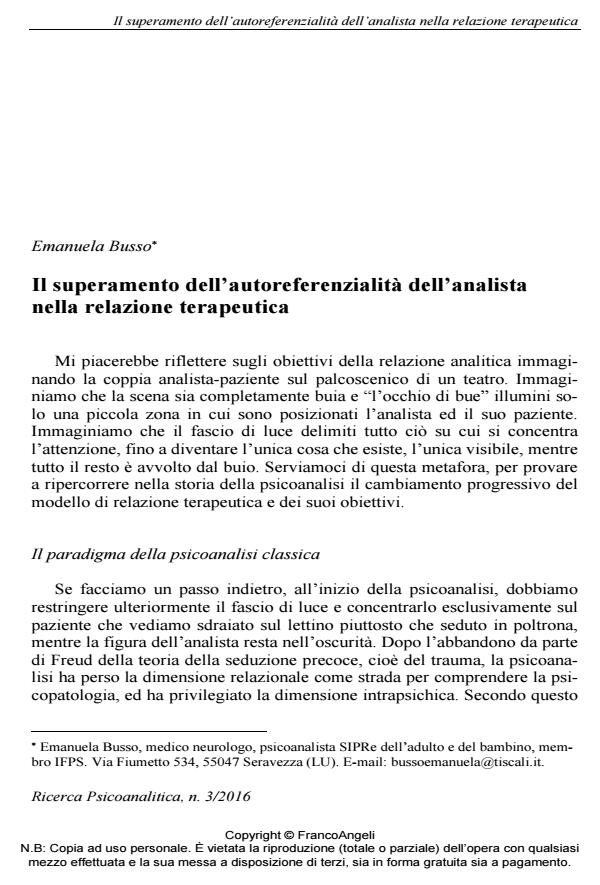Overcoming the analyst’s self-referentiality in the therapeutic relation
Journal title RICERCA PSICOANALITICA
Author/s Emanuela Busso
Publishing Year 2016 Issue 2016/3
Language Italian Pages 16 P. 25-40 File size 182 KB
DOI 10.3280/RPR2016-003003
DOI is like a bar code for intellectual property: to have more infomation
click here
Below, you can see the article first page
If you want to buy this article in PDF format, you can do it, following the instructions to buy download credits

FrancoAngeli is member of Publishers International Linking Association, Inc (PILA), a not-for-profit association which run the CrossRef service enabling links to and from online scholarly content.
Psychoanalysis was born as a therapeutic tool. The analyst’s aim was to heal the patient who in turn comes to be healed hoping to reach a state of wellbeing or to suffer less. The analyst-patient relation has always been established as the basic tool for therapy. From Freud’s "archeologist" analyst to the analyst co-constructing the relation and the course of analysis of relational analysis, in each case it is to the analyst-patient couple that we refer most of what takes place in a session. In the first case attention is paid to the patient’s past while in the second attention is paid to the present experienced by both parties in the session. I think that in this way of conducting psychoanalysis the analyst’s self-referentiality has remained unchanged. The patient’s life is outside the consulting room, but reality is often left on the background, while it should be the focus for both participants because the aim of therapy is improving the patient’s life and analytical work must be at the service of the patient’s future. Only if diagnosis and therapy keep account of the patient’s relational context can we reach true change.
Keywords: Analytical relation, relational meaning of symptoms, complexity model, relational context, change
Emanuela Busso, Il superamento dell’autoreferenzialità dell’analista nella relazione terapeutica in "RICERCA PSICOANALITICA" 3/2016, pp 25-40, DOI: 10.3280/RPR2016-003003